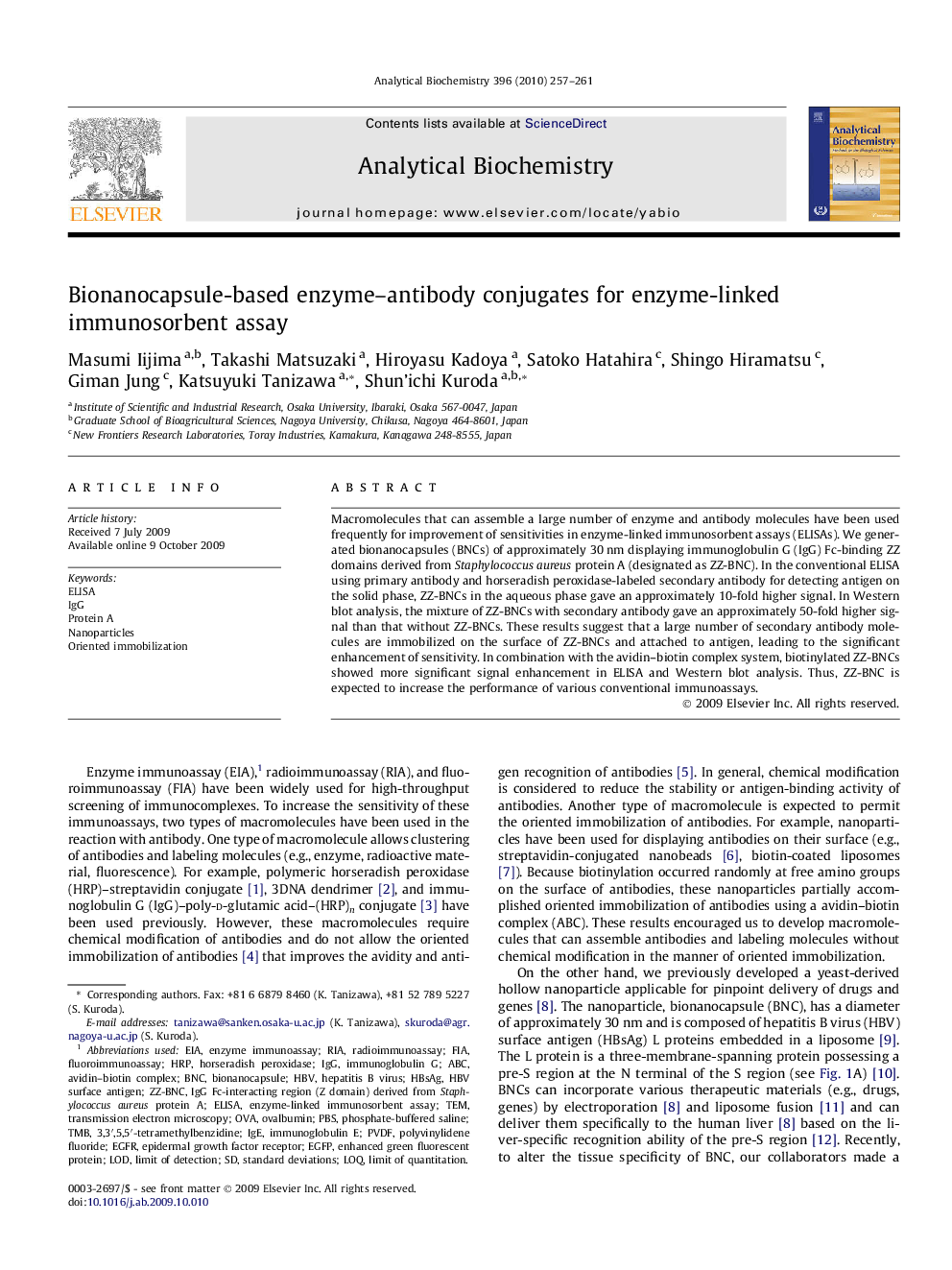| Article ID | Journal | Published Year | Pages | File Type |
|---|---|---|---|---|
| 10532958 | Analytical Biochemistry | 2010 | 5 Pages |
Abstract
Macromolecules that can assemble a large number of enzyme and antibody molecules have been used frequently for improvement of sensitivities in enzyme-linked immunosorbent assays (ELISAs). We generated bionanocapsules (BNCs) of approximately 30Â nm displaying immunoglobulin G (IgG) Fc-binding ZZ domains derived from Staphylococcus aureus protein A (designated as ZZ-BNC). In the conventional ELISA using primary antibody and horseradish peroxidase-labeled secondary antibody for detecting antigen on the solid phase, ZZ-BNCs in the aqueous phase gave an approximately 10-fold higher signal. In Western blot analysis, the mixture of ZZ-BNCs with secondary antibody gave an approximately 50-fold higher signal than that without ZZ-BNCs. These results suggest that a large number of secondary antibody molecules are immobilized on the surface of ZZ-BNCs and attached to antigen, leading to the significant enhancement of sensitivity. In combination with the avidin-biotin complex system, biotinylated ZZ-BNCs showed more significant signal enhancement in ELISA and Western blot analysis. Thus, ZZ-BNC is expected to increase the performance of various conventional immunoassays.
Related Topics
Physical Sciences and Engineering
Chemistry
Analytical Chemistry
Authors
Masumi Iijima, Takashi Matsuzaki, Hiroyasu Kadoya, Satoko Hatahira, Shingo Hiramatsu, Giman Jung, Katsuyuki Tanizawa, Shun'ichi Kuroda,
